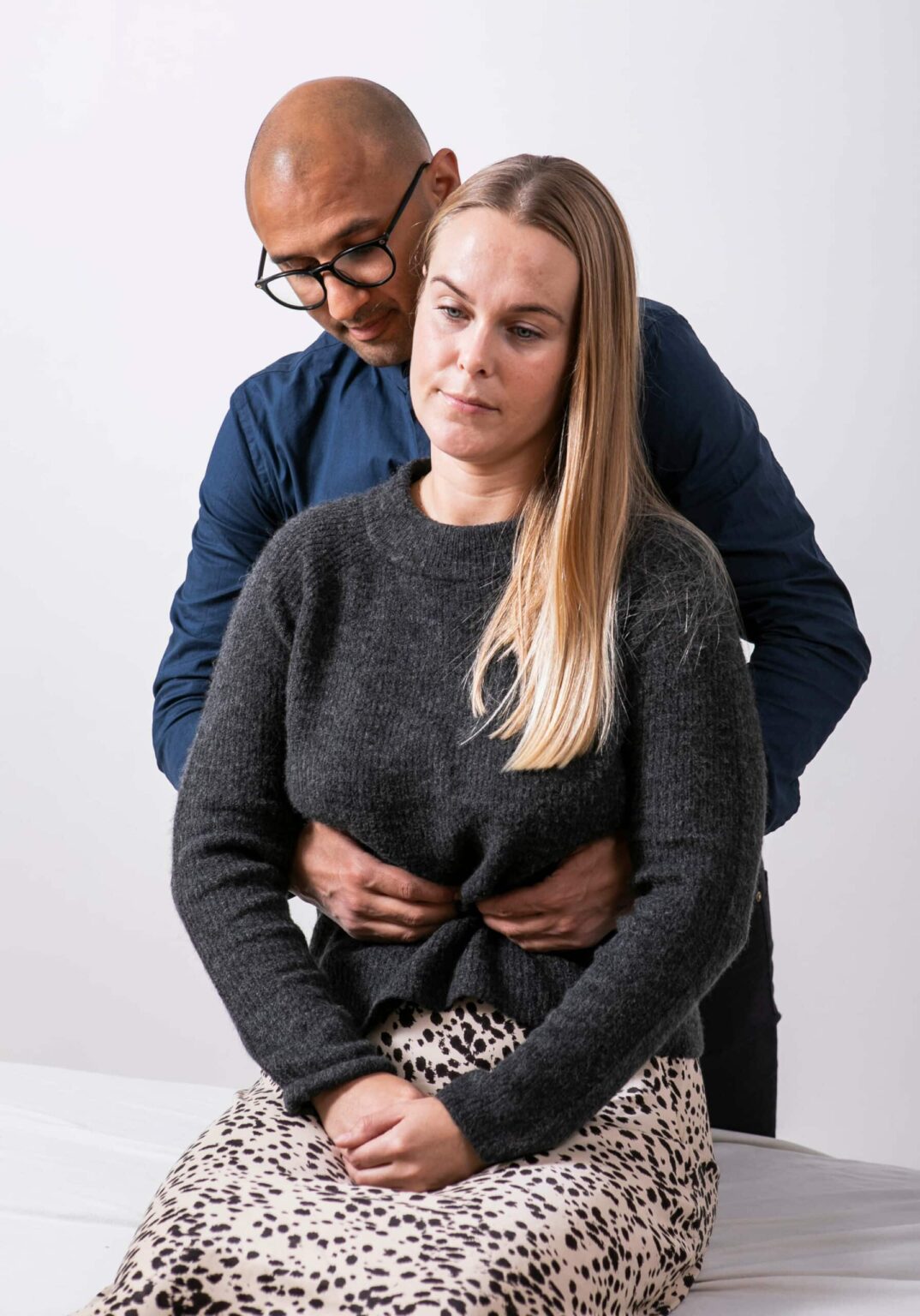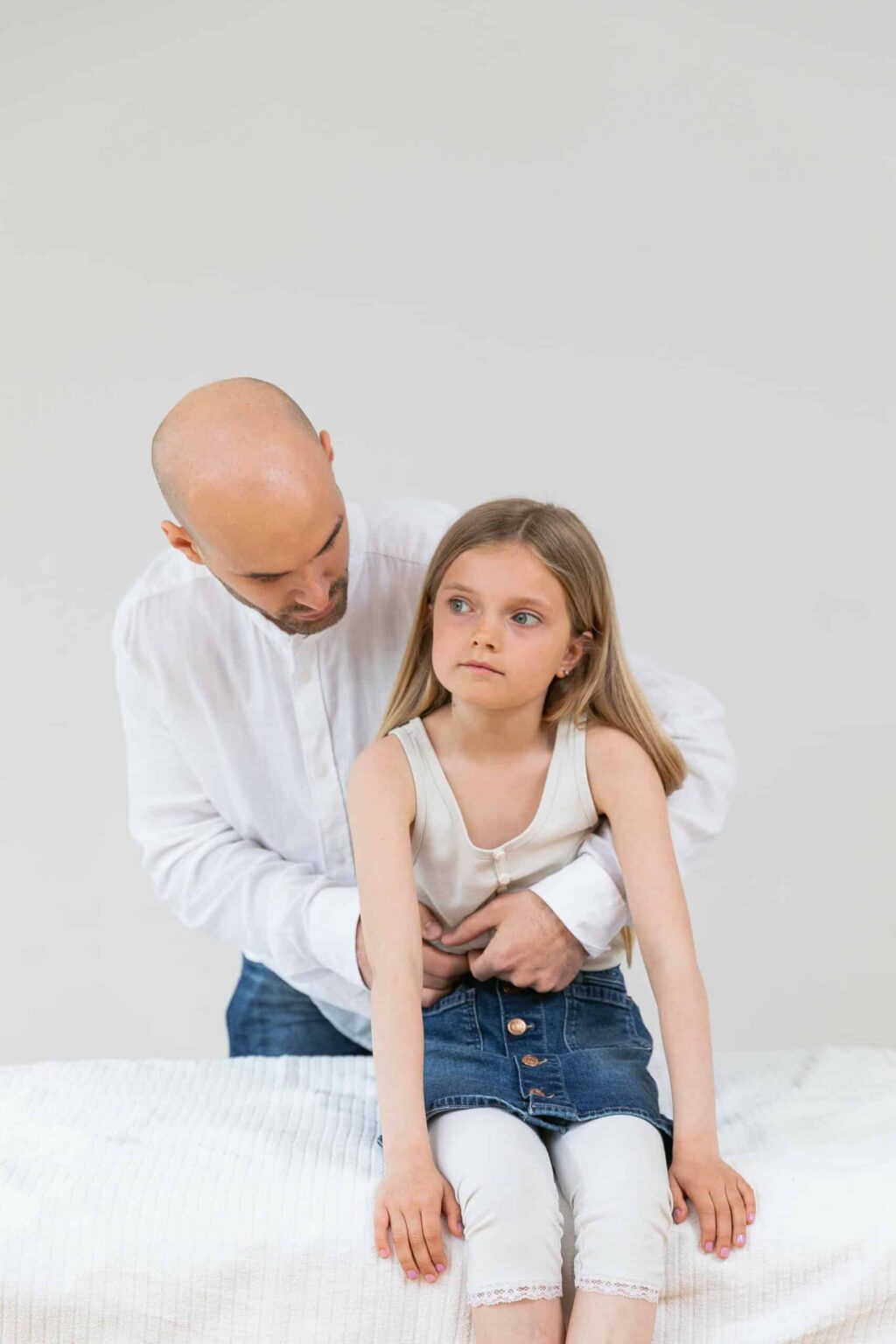We advise and can remedy problems from
Celiac disease
Learn more about celiac disease and its treatment
What is celiac disease?
Celiac disease, also called gluten intolerance, is a disease of the small intestine that causes an intolerance to gluten. The disease is chronic and autoimmune.
A small portion of the population has celiac disease, of which approximately a quarter are diagnosed.
When a person with celiac disease eats foods containing gluten, an inflammatory reaction occurs in the small intestine, which destroys the tiny cilia on the surface of the small intestine. This reduces the intestine’s ability to absorb vitamins, minerals and important nutrients from food (1).
Jump to section [Vis]
Symptoms of celiac disease will typically manifest as:
- Loose and frequent stools
- Stools that are often bulky, grayish-white, and smellier than normal
- Stomach rumbling (mild stomach pain)
- Diarrhea
- Air pollution
- Feeling exhausted/feeling tired
- In some cases, the condition may be almost symptomless.
- Iron deficiency without other explanation can also be caused by celiac disease
- Weight loss
- Fatigue
- Vomiting
- Anemia (blood deficiency)
- Unwanted infertility
In children, celiac disease can manifest itself as reduced growth and poor well-being. The condition can also cause mild and discrete symptoms (2, 3).
Diagnosing celiac disease
If you suspect celiac disease, the first step is to take a blood test. If the blood test and other symptoms suggest celiac disease, the next step will be to take a biopsy (tissue sample) of the small intestine. Based on the overall picture of symptoms, blood tests and biopsy, the diagnosis can be made.
A prerequisite for the diagnosis to be made is that you eat a gluten-containing diet, as this can give a false result if you have started to avoid gluten (4).
Untreated celiac disease can lead to a number of deficiency conditions and sequelae, such as osteoporosis, anemia (blood deficiency), intestinal cancer, lymphoma and involuntary infertility (3).
Celiac disease is partly hereditary. This primarily affects first-degree relatives, i.e. parents, siblings and children.
Celiac Disease vs. Gluten Allergy: Understanding the Differences
Celiac disease is an intolerance to gluten protein, but is sometimes referred to as gluten allergy because one cannot tolerate gluten. However, this is a misunderstanding, as it is not an actual gluten allergy with allergic reactions. In celiac disease, the allergy antibody IgE is not formed, but other antibodies. In allergies, more severe and acute symptoms such as asthma, hay fever, hives or, in the worst case, allergic shock are often seen.
The symptom picture of celiac disease, on the other hand, is not acute, but more characterized by chronic symptoms such as fatigue, abdominal pain, diarrhea, bloating and poor well-being.
However, you can have a wheat allergy, which is a food allergy in which you react to certain proteins in wheat grains (but not gluten). With a wheat allergy, you can often tolerate rye and barley, which are grains that contain gluten and are therefore not tolerated by celiac disease (5, 6).

Gluten-free diet: the cornerstone of celiac disease treatment
Celiac disease is a lifelong autoimmune disease for which there is no definitive cure. There is no medicine or vaccine that can prevent or cure celiac disease. Celiac disease is treated lifelong with a gluten-free diet, which in practice means a diet that does not contain gluten from wheat, rye and barley.
Studies show that most people with celiac disease can tolerate oats. However, only gluten-free oats should be used. If, contrary to expectations, you have problems with gluten-free oats, doctors and dietitians often recommend that you take a break from oats (grains) for up to three months. After that, oats are reintroduced in small portions to see if tolerance is better when the intestine has healed more and is less inflammatory. However, you should always remember to choose gluten-free oatmeal.
Some people find it necessary to avoid lactose in the first few months after diagnosis. Once the gut has recovered, most people can consume lactose again (7).
There is a huge difference in the amount of gluten that triggers symptoms in each individual. Some people experience diarrhea for several days, just if there was wheat flour in the sauce by mistake. Others find that they have to eat gluten for several days before symptoms appear.
Symptoms cannot be used as a guide to how much gluten you can tolerate if you have celiac disease.
You will typically see changes in the intestinal mucosa before symptoms of celiac disease appear, and it is therefore important to adhere to a 100% gluten-free diet if you have celiac disease.
Gluten-free products must not contain more than 20 mg gluten/kg, and the vast majority of gluten-free products contain significantly less gluten than this. This means that even the most gluten-sensitive should be protected. It is recommended that if you have symptoms despite a gluten-free diet, you should seek help from a dietitian to determine the cause.
Despite a gluten-free diet, it can take years for the small intestine to return to normal. You should therefore be patient and not lose heart, even if symptoms do not disappear completely on a gluten-free diet. In children, the effect of a gluten-free diet should be noticeable within a few weeks, both on mood and stool. After a few months, an effect on children’s growth is also seen (6).
Children and Celiac Disease: Early Detection and Management
Celiac disease can occur in all age groups, and is typically diagnosed slightly more often in girls than in boys. In the case of hereditary predisposition, it is recommended to test children, even if they do not have symptoms. If no signs of celiac disease are seen on the first test, it is recommended to test again after 3-4 years. In children, celiac disease occurs more frequently if they already have an autoimmune disease such as type 1 diabetes.
Symptoms in children:
- Heredity (parents and siblings)
- Abdominal pain, diarrhea, vomiting, bloating
- Fatigue, decreased energy
- Pain from joints and muscles
- Headache
- Reduced growth
Untreated celiac disease can cause children to experience reduced quality of life and an increased risk of, for example, bowel cancer and osteoporosis later in life.
If you as a parent suspect that your child has celiac disease, it is important to talk to your doctor for an evaluation. It is essential that the child continues to eat gluten during the evaluation until the diagnosis is made, to avoid a false result.
Once treatment with a gluten-free diet is started, the risk of complications decreases, and the child can live a life on an equal footing with others. If you have a child with celiac disease, it is important to be in dialogue with the adults at school, daycare, etc.(8).

Celiac disease and nutritional deficiencies: how to deal with them
As long as the intestine is not normal, it cannot fully absorb all nutrients. Therefore, you may need supplements, for example, of vitamin B12, vitamin D and calcium. This will typically be less necessary once the intestine has healed and is again absorbing sufficient nutrients from the diet.
Rye and wheat are good sources of B vitamins, vitamin E, calcium and iron in a typical diet, whereas gluten-free products based on starches, such as corn and wheat starch, rarely have the same nutritional content.
To meet the body’s needs, it is therefore particularly important to ensure that the rest of the diet is varied and to use naturally gluten-free alternatives (6, 7).
Celiac disease and pregnancy: advice and guidelines
Pregnant women with celiac disease should eat a varied, gluten-free diet and follow the other dietary advice given to all pregnant women. If you are in doubt about your reaction to gluten-free oats, you should avoid eating oats while pregnant (6).
Sources
1. What is celiac disease? – Dansk Cøliaki Forening (coeliaki.dk)
2. Celiac disease, overview – Patienthåndbogen på sundhed.dk
3. Symptoms – Dansk Cøliaki Forening (coeliaki.dk)
4. How to diagnose? – Dansk Cøliaki Forening (coeliaki.dk)
5. What is gluten allergy? – Dansk Cøliaki Forening (coeliaki.dk)
6. Sundhedsstyrelsen
7. Treatment of celiac disease – Dansk Cøliaki Forening (coeliaki.dk)
8. Children with celiac disease – Dansk Cøliaki Forening (coeliaki.dk)

Often related pain

Side stitch

Hidden constipation

Urinary incontinence

Celiac disease

Ulcer

Hernia

Lactose intolerance

